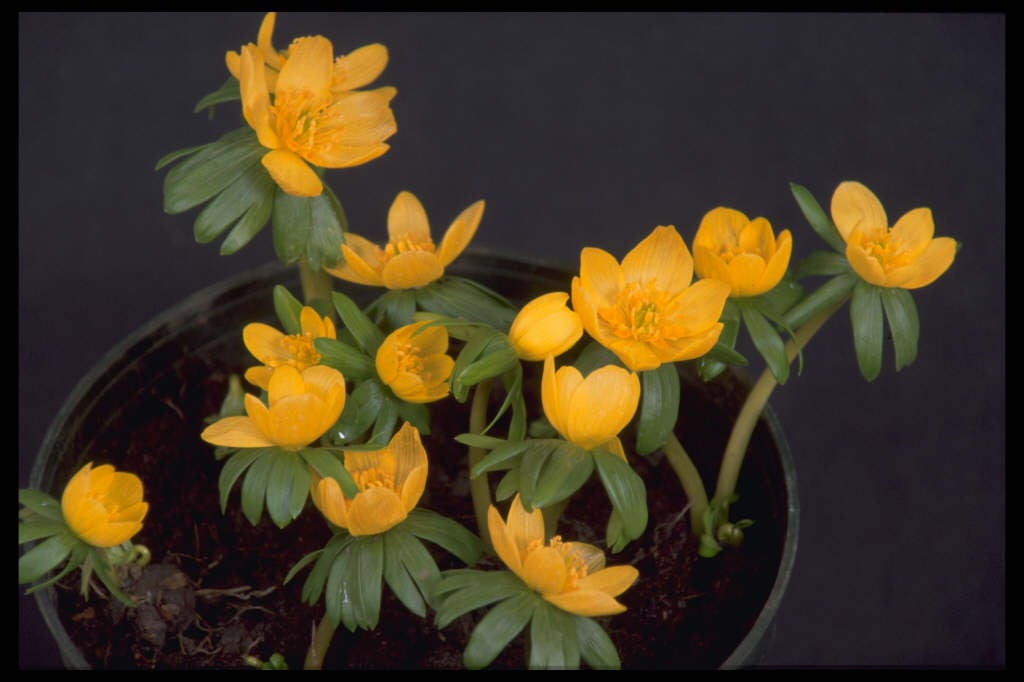Eranthis hyemalis 'Orange Glow'
winter aconite 'Orange Glow'
'Orange Glow' forms a small clump of rounded, palmately lobed basal leaves, with deep yellow flowers 2-3cm wide, sitting above deeply divided green bracts and opening in late winter and early spring

Buy this plant
Size
Ultimate height
Up to 10cmTime to ultimate height
2–5 yearsUltimate spread
0–0.1 metreGrowing conditions
Moisture
Moist but well–drained, Well–drainedpH
Acid, Alkaline, NeutralColour & scent
| Stem | Flower | Foliage | Fruit | |
| Spring | Yellow | Green | ||
|---|---|---|---|---|
| Summer | ||||
| Autumn | ||||
| Winter | Yellow |
Position
- Full sun
- Partial shade
Aspect
South–facing or West–facing or East–facing
Exposure
Exposed or Sheltered Hardiness
H6Botanical details
- Family
- Ranunculaceae
- Native to GB / Ireland
- No
- Foliage
- Deciduous
- Habit
- Bushy
- Potentially harmful
- Pets: Harmful if eaten. For further information and contact numbers regarding pets, see the HTA guide to potentially harmful plants
- Genus
Eranthis are small tuberous perennials with palmately or pinnately lobed basal leaves and cup-shaped flowers held above a collar of deeply lobed stem leaves
- Name status
Accepted
How to grow
Cultivation
Grow in humus-rich, moderately fertile soil that doesn't dry out. Tolerates most soil types but does best in alkaline soils
Propagation
Propagate by separating tubers in late spring after flowering. Dry tubers may not establish well
Suggested planting locations and garden types
- City and courtyard gardens
- Cottage and informal garden
- Gravel garden
- Patio and container plants
- Rock garden
- Wildlife gardens
- Banks and slopes
- Garden edging
- Underplanting of roses and shrubs
- Flower borders and beds
Pruning
No pruning required
Pests
May be susceptible to slugs
Diseases
May be susceptible to smuts
Get involved
The RHS is the UK’s gardening charity, helping people and plants to grow - nurturing a healthier, happier world, one person and one plant at a time.